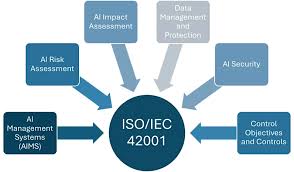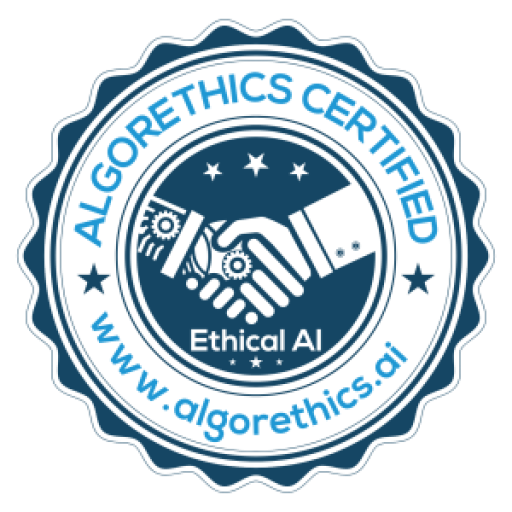ISO/IEC 42001 is an emerging international standard designed to regulate the responsible use of AI. It provides organizations with a framework to manage and govern AI systems in a way that promotes security, privacy and ethical practices while also fostering trust and credibility among stakeholders.
The Benefits Of Achieving ISO/IEC 42001 Readiness
Achieving ISO/IEC 42001 certification comes with various benefits that go beyond compliance and extend into strategic business gains.
Credibility And Trust: ISO/IEC 42001 certification marks excellence in AI governance. It signals to clients, partners and regulators that your organization follows best practices in managing AI systems. Certification helps establish trust, particularly in sectors like finance, healthcare and technology, where AI’s ethical and secure use is paramount.
Risk Mitigation: Implementing ISO/IEC 42001 helps reduce the risks associated with AI, such as data breaches, bias and system failures. For instance, ISO/IEC 42001 requires companies to implement controls to manage AI risks across the entire AI life cycle, from development to deployment. This reduces the likelihood of incidents that could lead to legal liabilities or damage a company’s reputation.
Compliance With Future Regulations: Although ISO/IEC 42001 isn’t yet a legal requirement, it positions organizations to comply with upcoming AI regulations, such as the EU AI Act. By adopting this standard now, you can stay ahead of regulatory trends and avoid last-minute scrambling to meet new legal mandates. Preparing for ISO/IEC 42001 also means you’re likely doing more than required, setting your company up as a leader in AI governance.
Key Steps For Achieving ISO/IEC 42001 Readiness
Getting your organization ISO/IEC 42001-ready requires careful planning and implementation. Below are the main steps to guide you through the process.
- Build a strong base for compliance.
The first step is to understand ISO/IEC 42001 requirements thoroughly. Familiarize yourself with essential AI terms and principles, such as those outlined in ISO/IEC 22989, to ensure you speak the same language as auditors. Next, define whether your organization is an AI provider, developer or user. This is crucial because your AI management system (AIMS) needs to be tailored to your role in the AI ecosystem.
Once roles are clear, conduct an initial gap analysis to assess how your current AI management practices stack up against ISO/IEC 42001 standards. This will help you identify areas that need improvement, such as risk management, ethical AI use and data security.
- Develop and implement AIMS.
After identifying gaps, it’s time to build your AIMS. Appoint a qualified project manager with knowledge of both AI and compliance issues. This leader will oversee the development of AIMS, ensuring that processes are documented and aligned with ISO/IEC 42001 requirements.
Your AIMS should include controls that address specific AI risks, like bias, security vulnerabilities and data integrity. Regular updates are necessary to keep these controls effective as AI technology evolves.
- Prepare for an external audit.
Conduct an internal audit before undergoing an external audit to ensure all compliance gaps have been addressed. Internal audits serve as a trial run, identifying areas needing further attention. Additionally, make sure all necessary documentation is organized and up to date to provide transparency to auditors.
Addressing Common Challenges In ISO/IEC 42001 Readiness
Achieving ISO/IEC 42001 readiness is no small feat, and companies often face several challenges along the way.
Resource Allocation: Organizations frequently underestimate the resources required to implement ISO/IEC 42001 controls. A dedicated team, sufficient budget and proper tools are essential to meet the requirements effectively. Ensure that key personnel are trained and allocate resources across departments to support implementation.
Internal Resistance: Change can be difficult, and employees might view ISO/IEC 42001 compliance as a burden. Overcoming internal resistance requires building awareness of the long-term benefits, such as risk reduction and enhanced market reputation. Communicating these advantages early and often helps ease the transition.
Keeping Pace With AI Technology: AI technology evolves rapidly, and maintaining compliance requires ongoing vigilance. ISO/IEC 42001 readiness isn’t a one-time effort. Companies must continuously review and update their AIMS to keep pace with new technologies, changing regulatory landscapes and emerging AI risks.
Additional Considerations For ISO/IEC 42001 Readines
In addition to the core steps, a few other key actions can strengthen your ISO/IEC 42001 readiness and ensure long-term compliance.
Engage executive leadership for ongoing support.
To achieve and maintain ISO/IEC 42001 readiness, it’s crucial to have buy-in from senior management. Building a strong business case for certification will help secure the necessary resources and long-term commitment. Highlight the strategic benefits, such as enhancing market competitiveness and staying ahead of regulatory changes, to align leadership with compliance goals.
Plan for continuous improvement and post-certification monitoring.
Certification is just the beginning. Establish processes for ongoing improvement of your AI management system. Regular internal and external audits should be scheduled to identify areas for refinement. This will help maintain ISO/IEC 42001 compliance and prepare your organization for recertification, which is required every three years.
Position Your Company As A Leader
Achieving ISO/IEC 42001 readiness positions your company as a leader in responsible AI management, ensuring that your AI systems are secure, ethical and compliant. By following these steps—building a strong foundation, developing an AIMS, conducting thorough audits and addressing challenges—you can navigate the complexities of ISO/IEC 42001 certification. More importantly, your company will be well-prepared for the future of AI governance, reducing risks and gaining the trust of clients and stakeholders along the way.







